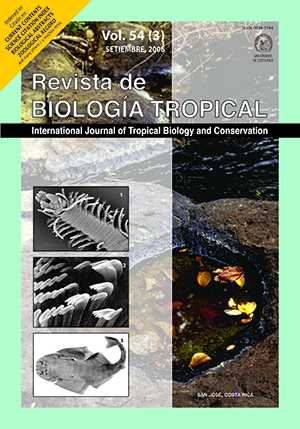Resumen
Entre 1993-97, observamos el comportamiento de alimentación de la lapa roja (Ara macao) en el Pacifico Central de Costa Rica. La lapa roja se alimentó de semillas, frutas, hojas, flores y corteza de 43 especies de plantas. Varias partes de las plantas comidas por las lapas contienen compuestos secundarios tóxicos al ser humano, y especies adicionales incluidas en la dieta son exóticas; introducidas por razones agrícolas, forestales o estéticas. Especies de árboles importantes como alimento de la lapa roja incluyen: Ceiba pentandra, Schizolobium parahybum, y Hura crepitans; también son criticas para la población de la lapa roja debido a proveen cavidades para anidación. Los resultados de este estudio contribuyen a la conservación de la lapa roja en el Pacifico Central de Costa Rica a través de la promoción de la protección de árboles individuales y programas de reforestación a nivel de escuela primaria que se enfocan en especies de árboles que la lapa utiliza para alimentación o anidación. La conservación de la lapa roja es importante, debido al declive de sus números en Costa Rica.
##plugins.facebook.comentarios##

Esta obra está bajo una licencia internacional Creative Commons Atribución 4.0.
Derechos de autor 2006 Revista de Biología Tropical


